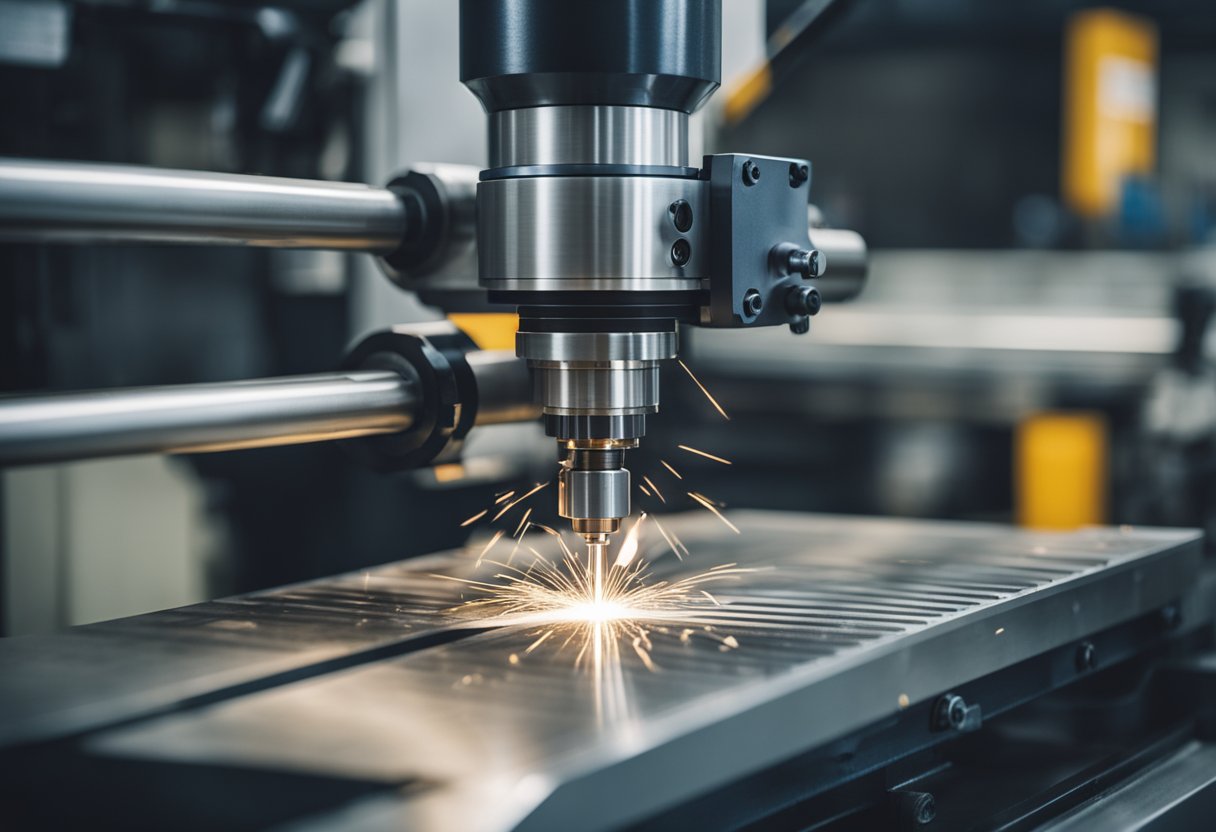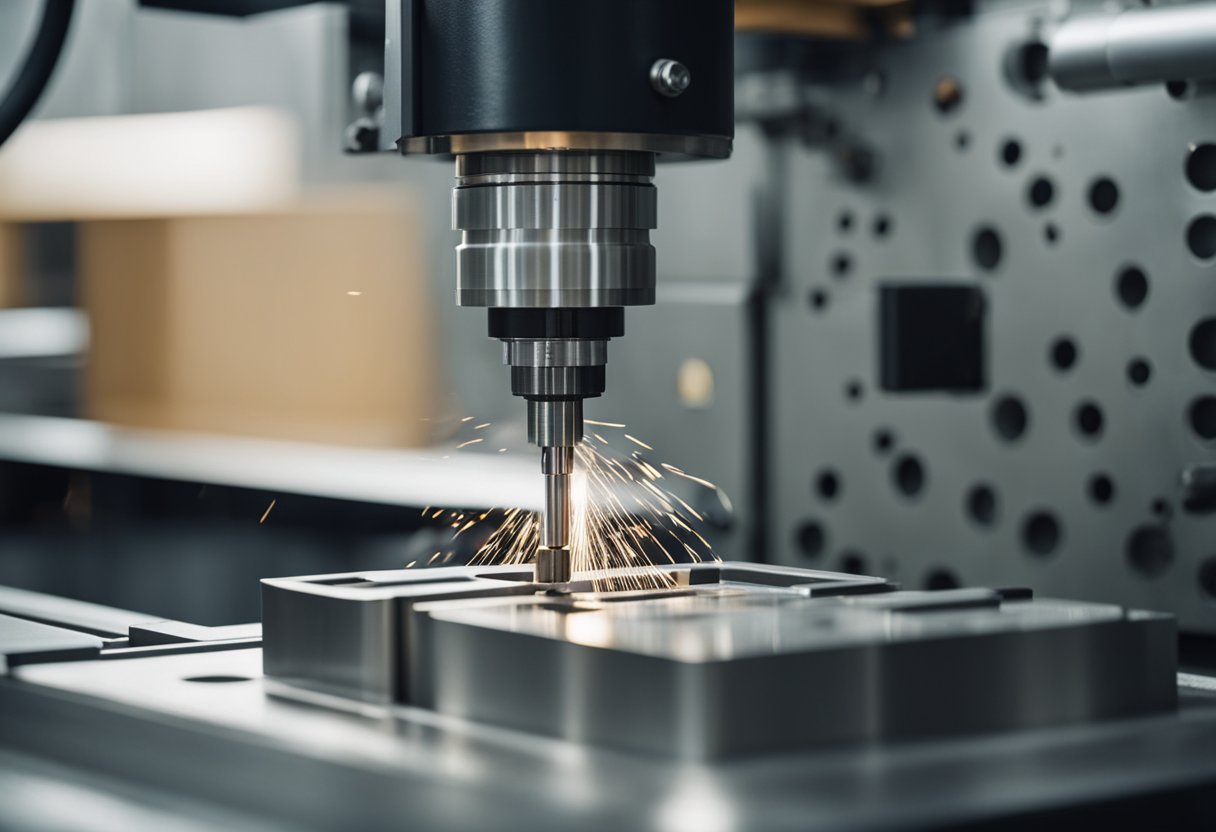CNC Milling Machine: A Comprehensive Guide to the Basics and Applications
CNC milling machines are an essential tool in modern manufacturing. These machines use computer-controlled movements to precisely shape and cut materials, allowing for high levels of precision and automation in production. CNC milling machines are commonly used in industries such as aerospace, automotive, and medical device manufacturing.

Precision is a key advantage of CNC milling machines. The computer-controlled movements of the machine allow for incredibly precise cuts and shapes, resulting in high-quality finished products. CNC milling machines can also be programmed to create complex shapes and designs, making them useful for a wide range of manufacturing applications.
Automation is another important benefit of CNC milling machines. Once a program is loaded into the machine, it can run without human intervention, allowing for efficient and consistent production. This automation also reduces the risk of errors and accidents, making CNC milling machines a safer option for manufacturing. Overall, CNC milling machines are a powerful tool for precision manufacturing, allowing for high levels of automation and efficiency in production.
Fundamentals of CNC Milling
Understanding CNC Mill Technology
CNC milling is a process that involves using computer numerical control (CNC) technology to control the movement of a cutting tool in order to remove material from a workpiece. The CNC milling machine is a highly precise and efficient tool that is capable of producing complex shapes and designs with a high degree of accuracy.
The CNC mill is controlled by a computer, which uses a series of commands to control the movement of the spindle and the cutting tool. The spindle is driven by a motor, which rotates the cutting tool at high speeds, allowing it to cut through the workpiece with precision.
Types of CNC Milling Machines
There are several different types of CNC milling machines available, each with its own unique features and capabilities. Some of the most common types include vertical mills, horizontal mills, and gantry mills.
Vertical mills are the most common type of CNC milling machine, and are typically used for smaller projects. Horizontal mills are larger and more powerful, and are ideal for larger workpieces. Gantry mills are the largest and most powerful type of CNC milling machine, and are often used for industrial applications.
Components of CNC Mills
The CNC milling machine consists of several key components, including the spindle, motor, workpiece, Z-axis, and Y-axis. The spindle is the part of the machine that holds the cutting tool, while the motor is responsible for driving the spindle and controlling its speed.
The workpiece is the material that is being cut, and is typically held in place by a vice or clamp. The Z-axis controls the up and down movement of the cutting tool, while the Y-axis controls the side to side movement.
Overall, CNC milling is a highly precise and efficient process that is used in a wide range of industries, from aerospace and automotive manufacturing to medical device production. By understanding the fundamentals of CNC mill technology, types of CNC milling machines, and components of CNC mills, manufacturers can choose the right machine for their specific needs and produce high-quality parts with ease.
Materials and Machining Processes
Suitable Materials for CNC Milling
CNC milling machines are capable of cutting a wide range of materials, including metals such as aluminum, steel, and titanium. These materials are popular choices due to their strength, durability, and versatility. However, the choice of material will depend on the specific application and the desired performance of the finished product.
Aluminum is a lightweight and corrosion-resistant material that is commonly used in aerospace and automotive industries. Steel, on the other hand, is a strong and durable material that is ideal for heavy-duty applications such as construction and manufacturing. Titanium is a high-strength and lightweight material that is commonly used in the medical and aerospace industries.
Machining Operations and Capabilities
CNC milling machines are capable of performing a wide range of machining operations, including drilling, tapping, and milling. These machines can also perform complex 3D cutting operations, making them ideal for producing intricate parts and components.
The capabilities of a CNC milling machine will depend on its size, power, and the number of axes it has. Larger machines with more axes are capable of producing more complex parts and components with higher precision and accuracy.
Precision Machining and Quality Control
Precision machining is essential for producing high-quality parts and components. CNC milling machines are capable of achieving high levels of precision and accuracy, making them ideal for producing parts with tight tolerances.
Quality control is also an important aspect of CNC milling. Manufacturers must ensure that each part or component meets the required specifications and standards. This is achieved through rigorous testing and inspection processes, which help to identify any defects or inconsistencies in the finished product.
In conclusion, CNC milling machines are capable of cutting a wide range of materials and performing complex machining operations with high precision and accuracy. The choice of material will depend on the specific application and desired performance, while the capabilities of the machine will depend on its size, power, and number of axes. Precision machining and quality control are essential for producing high-quality parts and components.
Advanced CNC Milling Applications

CNC milling machines are highly versatile and can be used for a wide range of applications. In this section, we will explore some of the advanced CNC milling applications that are possible with modern machines.
5-Axis Milling and Complex Components
One of the most powerful features of modern CNC milling machines is their ability to perform 5-axis milling. This allows for the creation of complex components with intricate geometries that would be impossible to produce with traditional 3-axis milling. With 5-axis milling, the cutting tool can be oriented in any direction, allowing for the creation of complex shapes and contours.
5-axis milling is particularly useful in industries such as aerospace and medical implants, where components must be lightweight, strong, and highly precise. By using 5-axis milling, manufacturers can create components that are both functional and aesthetically pleasing.
Industry-Specific CNC Applications
CNC milling machines are used in a wide range of industries, from energy generation to medical implants. In each industry, there are specific applications that require advanced CNC milling techniques.
For example, in the energy generation industry, CNC milling machines are used to produce complex components for turbines and generators. These components must be highly precise and able to withstand extreme temperatures and pressures.
In the medical industry, CNC milling machines are used to produce implants and prosthetics. These components must be biocompatible and highly precise, as they will be implanted into the human body.
Automation and High-Volume Production
CNC milling machines are ideal for automation and high-volume production. With the use of robotics and other automation solutions, CNC milling machines can operate 24/7, producing large quantities of components with consistent quality.
This is particularly useful in industries such as automotive and aerospace, where components must be produced in large quantities with tight tolerances. By using automation solutions, manufacturers can increase their production capacity while maintaining high levels of quality.
In conclusion, CNC milling machines are highly versatile and can be used for a wide range of applications. With advanced features such as 5-axis milling and automation solutions, manufacturers can produce complex components with high precision and consistency.
Selecting and Operating CNC Mills

When it comes to selecting and operating CNC mills, there are several factors to consider. From choosing the right machine to selecting the right software, there are many decisions to be made. In this section, we will discuss the key considerations when selecting and operating CNC mills.
Choosing the Right CNC Mill
Choosing the right CNC mill is critical to the success of any machining operation. There are several factors to consider when selecting a CNC mill, including budget, specifications, and the type of control system.
Budget is often the most important consideration when selecting a CNC mill. It is important to determine how much you are willing to spend before starting your search. Once you have a budget in mind, you can begin to look for machines that fit within your price range.
Specifications are also an important consideration when selecting a CNC mill. You will need to determine the size of the workpiece you will be machining, as well as the materials you will be working with. This information will help you determine the size and capabilities of the machine you need.
CNC Control Systems and Software
The control system and software are critical components of any CNC mill. There are several different types of control systems available, including Fanuc, Siemens, Heidenhain, and Mitsubishi.
The type of control system you choose will depend on your specific needs and preferences. Each system has its own strengths and weaknesses, so it is important to do your research before making a decision.
In addition to the control system, you will also need to select the right operating software. There are several different options available, each with its own set of features and capabilities. It is important to choose software that is easy to use and that meets your specific needs.
Maintenance and Technical Support
Maintaining and servicing your CNC mill is critical to its long-term performance and reliability. It is important to choose a machine that is easy to maintain and that comes with good technical support.
When selecting a machine, be sure to ask about the availability of technical support and maintenance services. You will want to choose a machine that comes with a warranty and that has a good reputation for reliability.
In conclusion, selecting and operating a CNC mill requires careful consideration of several key factors. By choosing the right machine, control system, and software, and by maintaining your machine properly, you can ensure the success of your machining operations.
Frequently Asked Questions

What factors influence the cost of a CNC milling machine?
The cost of a CNC milling machine is influenced by various factors, such as the machine's size, complexity, and features. Larger machines with more advanced features tend to be more expensive. Additionally, the brand and quality of the machine can also affect its price.
Where can I find CNC milling machines for sale?
CNC milling machines can be found for sale from various sources, such as online marketplaces, machinery dealers, and manufacturers. It is important to research and compare different options to find a machine that meets your specific needs and budget.
Which materials are most suitable for CNC milling machines?
CNC milling machines can work with a variety of materials, including metals, plastics, and wood. However, the specific material used will depend on the machine's capabilities and the desired outcome of the project.
What are the benefits of using a desktop CNC milling machine?
Desktop CNC milling machines offer several benefits, such as their compact size, ease of use, and affordability. They are ideal for small-scale projects and hobbyists who do not require the capabilities of larger industrial machines.
How does a Haas CNC milling machine compare to other brands?
Haas CNC milling machines are known for their reliability, accuracy, and quality. They are a popular choice among machinists and are often compared favorably to other brands in terms of performance and value.
What should beginners consider when choosing their first CNC mill?
Beginners should consider factors such as the machine's size, capabilities, and ease of use when choosing their first CNC mill. It is also important to consider the level of support and resources available from the manufacturer or dealer to ensure a smooth learning curve.
